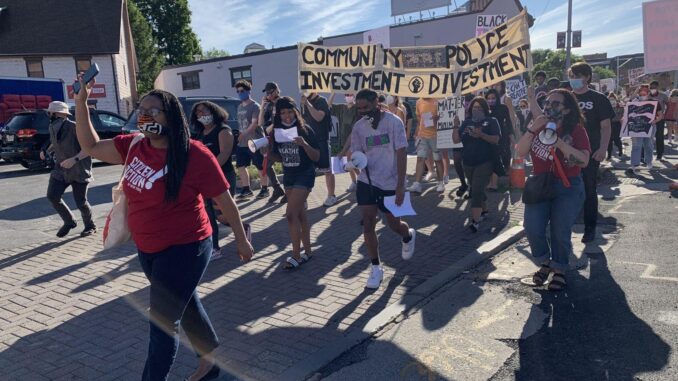
On Sept. 9, Wednesday Walks for Black Lives held their biweekly protest against police brutality, which typically include speeches followed by a march throughout the city of Kingston.
The first Wednesday Walks for Black Lives march began after the death of George Floyd, with the theme to walk the distance from Kingston, NY to Ahmaud Arbery’s house in Brunswick, GA.
“Right now we’re focusing on local issues. We want to focus on things that we can take little bites out of… It’s important to be effective in our own community,” Anne Ames, an organizer for Wednesday Walks for Black Lives said.
The group focuses on local issues but their goals are reassessed since systematic racism penetrates policing and politics.
“Maybe [Stop and Frisk in Kingston] was a response the recent jail audit [which] found that the jail [has] double the staff and bedding, as there are occupants because number of inmates have gone down… Or maybe it’s partially in response to the marches,” Fanon Frazier, a former member of Wednesday Walks for Black Lives said.
“[Our goals are] always a moving target because that hate is so is such a strong network of white supremacy. So [we are] reassessing in terms of just trying to keep up.”
At the protest, Wednesday Walks for Black Live instructed protestors to sign a petition, which would keep School Resource Officers, or police, out of schools and a petition which would remove police from the fourth ward, an area that is particularly victimized by the city’s stop and frisk policy. The group also shared resources to send videos and pictures of people who were illegally searched under Stop and Frisk.
The crowd was also directed to attend the city of Kingston Police Commission meeting online, which was occuring during the event. Protestors wrote messages like “Black Lives Matter”, “Get Cops Out of Schools” and “Defund the Police” in the online chat.
Luisa Fuentes, a lawyer and former assistant district attorney, spoke about how everyone can support black lives by getting involved with local government through executive order 203.
In the aftermath of George Floyd’s death, Gov. Andrew Cuomo enacted on June 12 Executive Order 203, the New York State Police Reform and Reinvention Collaborative, which requires that local police departments review their policing polices, consult with the public and then release a plan of action no later than April 1 2021.
“[Local governments are] going to stack [the collaboratives] with people who aren’t murdered when they’re pulled over for a broken taillight, or jogging in the street or sitting on their couch eating ice cream, or sleeping in their bed,” Louise Fuentes said.
“Please contact the people in your town and ask what is going on with your executive order 203 committee… And you don’t ask how [you] get involved, you demand to get involved.”
Every week, there are protests for black lives matter in the Hudson Valley. Each protest requires hours of work, which is done by people behind the scenes.
“A lot of unknown people are making banners, signs and doing petitions. [These unknown people are also carrying water or marshaling. And ask [how you can help],” said Ames.
